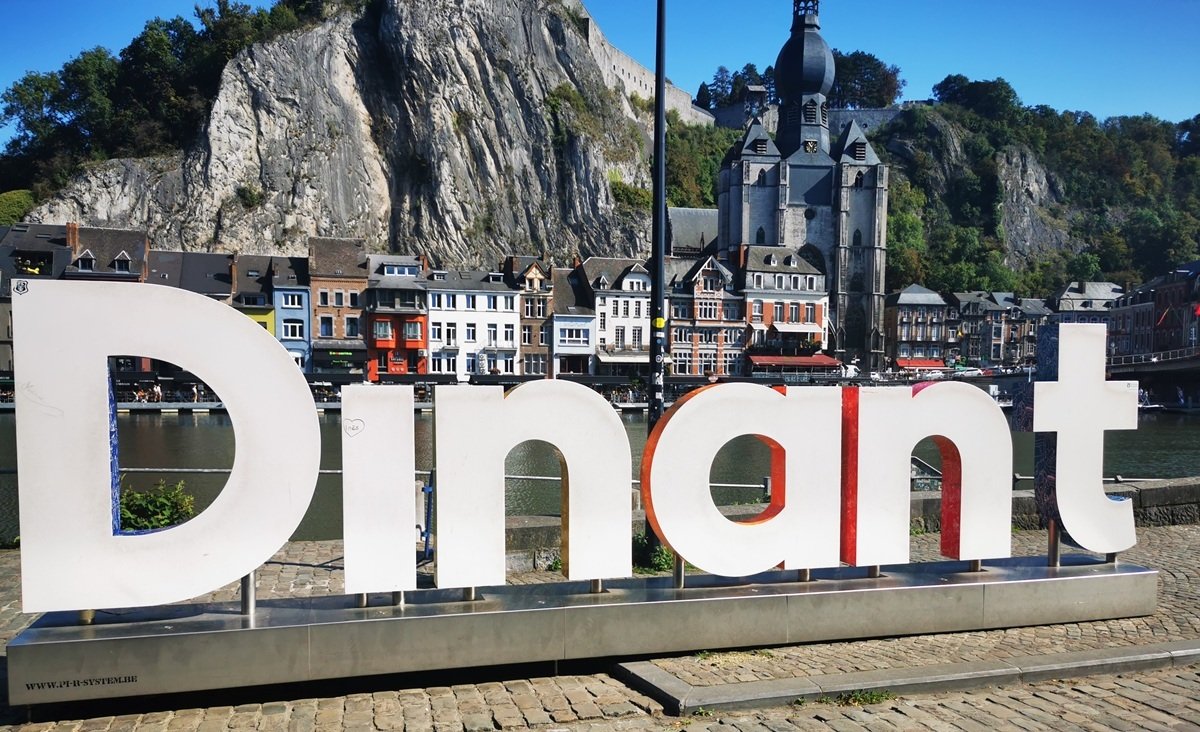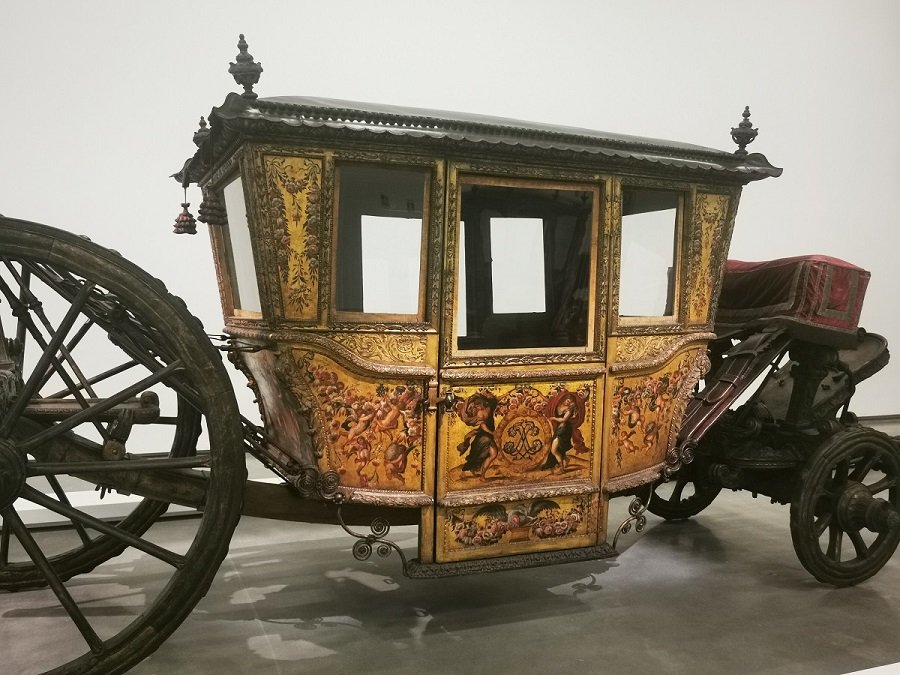Fifty-six miles southeast of Brussels, some 12 miles north of the French border, in the valley of the Meuse River lies the town of Dinant. It is easily accessible by train or car and makes an excellent daytrip destination, one that is filled with history, music, and relaxed waterside vibes.
Some Quick History
Dinant means “Divine Valley” and once you admire the views, you’ll see why its original settlers chose the name. There have been people here since Neolithic times. Its position on the river made it a key strategic location for trade and military through much of its history including, as we shall read later, during World War I. It is one of the “Martyr towns” of Wallonia, so named for the heavy price their population paid during the war.
During the Middle Ages, the town was famed for its copper making and metalworking guilds, and produced high-quality wares and weapons, some of which can be seen on display at the Citadel. It was also the birthplace of musician Adolphe Sax, creator of the saxophone. The town continues to celebrate its musical heritage with regular concerts.
Today Dinant has a population of 13,500 and is popular with tourists – both daytrippers and hikers seeking to explore the broader Meuse Valley area.
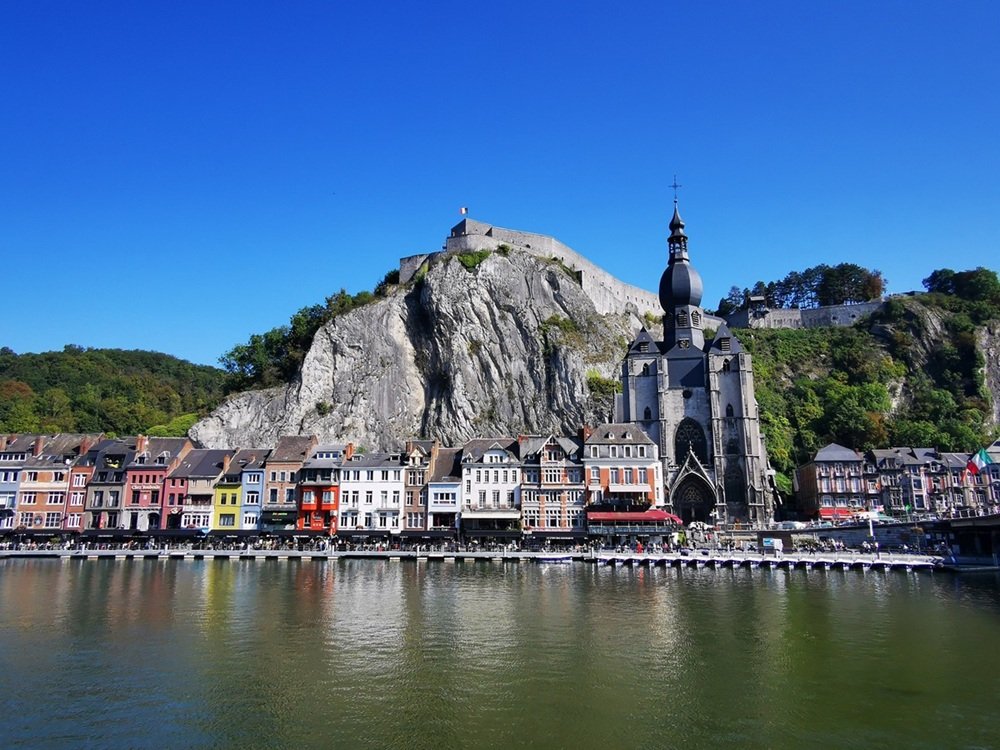
Sack of Dinant
August 15, 1914, is remembered for the Battle of Dinant. French and German troops clashed here, vying to gain control of the Citadel and the town, thereby controlling the movement of supplies up the river. A young Charles de Gaulle was among the wounded on the French side.
Eight days later, the largest massacre by German troops in all of 1914 took place here. Although the townspeople had disarmed several days before the arrival of the enemy, following instructions not to resist any attempted invasion, the German troops remained convinced that the town was a hiding place for resistance fighters. On August 23, they killed 674 residents. Men, women, and children were all killed indiscriminately. The oldest was 88, the youngest just 3 weeks old. The Sack of Dinant continued for several days, resulting in two thirds of the town (some 750 buildings) being burned to the ground.
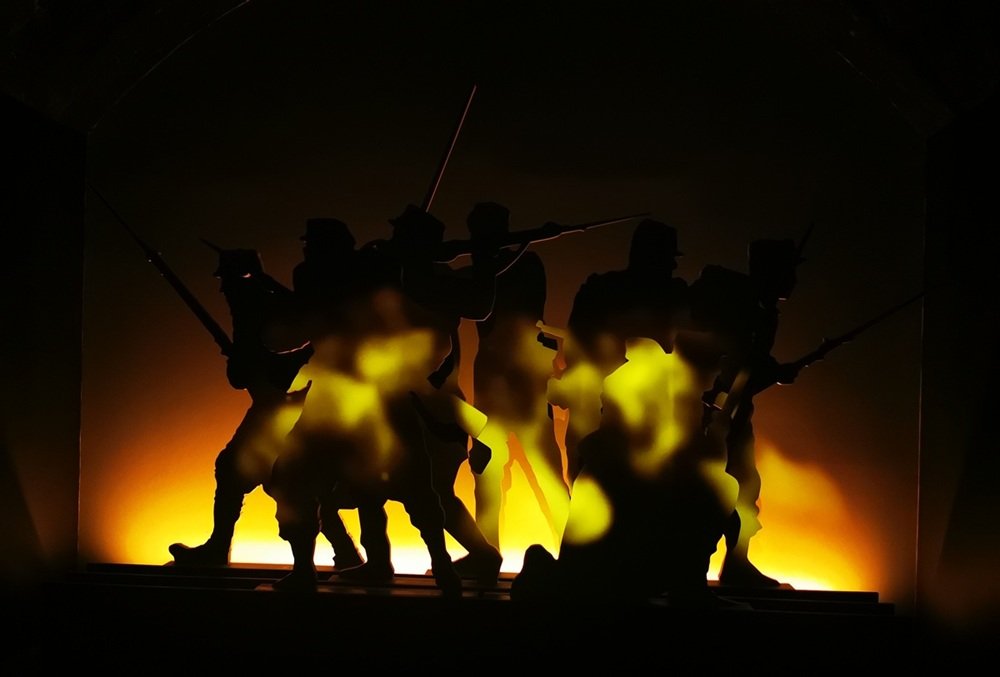
The massacre created global outrage, and had lasting repercussions for the town. For decades after the war, Germany denied that the events had taken place. Not until 2001 did Germany finally issue a formal apology and Dinant allowed a German flag to be flown in town alongside the other European flags.
Incidentally, you may be wondering how most of the town was destroyed and yet the buildings all look strangely medieval. That’s because after the war, the town rebuilt itself as an exact copy of everything that was burned.
Citadel of Dinant
Towering high above the town in very imposing fashion is the Citadel of Dinant. From its giant granite perch, it offers views across the valley, cementing its previously mentioned strategic position. There has been some type of fortification on the site since 1051, and the current fortress dates to 1815.
To reach the Citadel, you can either climb 408 (according to the website; some claim 466) steps or take a cable car. Given the heat during our visit, and the number of people we saw foolhardily attempting the climb only to return red-faced minutes later, we opted for the latter.
Once at the top, you can admire stunning views across the town and along the river. But also explore the Citadel itself. Inside, you will find exhibits charting its extensive history through a series of stone tunnels and courtyards. You will also learn more about the Sack of Dinant in an interactive display, first opened in 2020. Walk in the footsteps of the soldiers, seeing where they camped and trained, and experience a moving tribute to the townspeople who lost their lives.
Church of Notre Dame
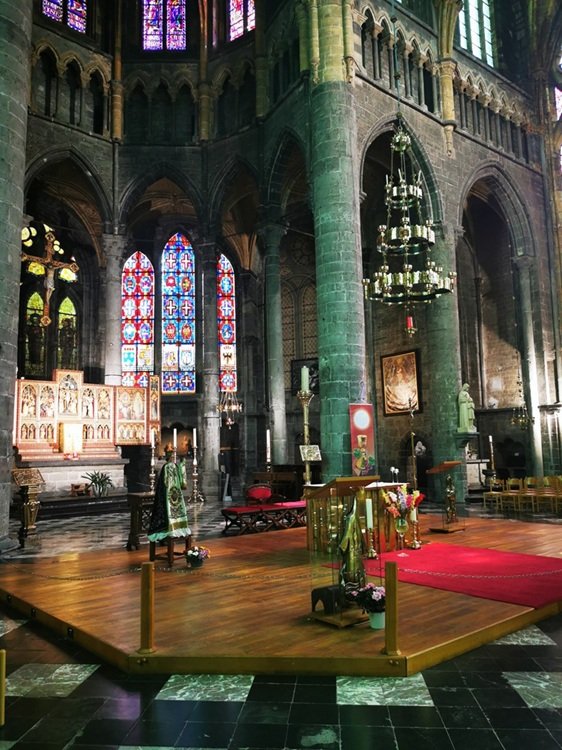
Just before the steps leading to the Citadel, you encounter the wonderfully Gothic Collegiate Church of Our Lady. The limestone creation was originally designed as a town hall, and was rebuilt and added on to in various stages through its history. It’s an incredibly distinctive design both inside and out. It’s also free to enter, as long as services are not underway, so worth a look.
Home of the Saxophone
It’s hard to miss the Citadel towering over Dinant. It is equally hard to miss the saxophones. They’re everywhere! In fact, the De Gaulle Bridge that links the two sides of town across the Meuse is lined with large brightly colored saxes. What’s going on?
It’s all down to Dinant’s most famous resident. One who forever changed music.
Antoine-Joseph Sax (he preferred to go by Adolphe) was born in Dinant in 1814. His parents were both instrument designers and so, from a young age, he learned how to modify and create instruments of his own. Adolphe later moved to Brussels to study music, and then he relocated to Paris, where he would spend the remainder of his life.
Fun fact: Adolphe was an incredibly accident-prone child. His misadventures included a fall wherein he hit his head on the stone floor, drinking acid, a gunpowder explosion, falling into a fire, asphyxiation, and falling into the river. His mother declared there was no way he would live very long. He died in 1894 at the age of 79.

Dinant never forgot their famous son and the town celebrates him still. Visitors can go to the Maison de Monsieur Sax, a small 24-hour museum that features displays about Sax and his instruments, as well as audio exhibits featuring the various types of saxophone. A statue of him sits outside. You can also see the very first saxophone he built.
Meanwhile, there are statues of saxophones around town, including across the aforementioned bridge. Music concerts are held throughout the year, including the three-day Dinant Jazz Festival every July.
Beer
No trip to Belgium would be complete without a little beer. In Dinant, that means sampling Leffe. The monks at the local abbey first started brewing beer in 1240. The water supply was riddled with disease but brewing made it safe to drink. And thus a Belgian tradition was born. Leffe is no longer brewed at the abbey. Instead, it is a commercial operation. However, visitors can visit Maison Leffe to learn about the history of the abbey, the brewing process, and the various Leffe products. And yes, there is a tasting component to the tour. Afterwards, you can sit in one of the many riverside restaurants and enjoy another glass or two.

